As soon as I arrived in Chengdu, my line of vision was somewhat invaded by… pandas.
Bears don’t actually roam the city, but the streets are bursting with shops selling panda souvenirs, there are posters of pandas over buildings and all public transport has pandas painted on it….
Once you enter Chengdu, you’ve basically entered panda-land.
The Panda Breeding and Research Centre is actually a few miles out of the city, reachable by bus. The centre is dedicated to the protection of the endangered panda, with the aim of preserving the species from extinction. The Breeding and Research centre do this by rearing and raising pandas and releasing them into the wild when they are ready to fend for themselves.
I’m not into animal tourism, and am strongly against keeping animals in captivity against their own will. There’s so many places where animals are mistreated on different levels around the world; from riding elephants in Thailand to swimming with dolphins in Mexico. Even seeing penguins at the London Zoo raises some ethical issues. But the Chengdu panda centre is not a zoo and, although it draws in huge crowds, is not merely a tourist attraction. The centre is really dedicated to the preservation of the panda, through research and breeding.
How endangered are pandas?
The Chinese love their pandas and rightly so. They are their national treasure, an animal that only live in China … but they may soon cease to exist. It is believed that there are only 2,000 pandas in the world, all of which call the Sichuan, Shaanxi and Gansu provinces home. Over 70% are believed to live in the Sichuan Province, where Chengdu is located. So this area is very much one of the only places where pandas live, and it’s highly unlikely (and pretty dangerous) that you’ll find one in the wild.
Due to the rapid industrialisation and deforestation of China, pandas are losing their natural habitat. Pandas are solitary and unsociable animals- one panda likes to have 6km of square space around them at any one time (which takes ‘alone time’ to a whole new level). Therefore, as the population of China rises, it becomes harder and harder for pandas to find the room they need to survive.
What is the Chengdu Panda Centre?
The research base houses and cares for Giant Pandas and Red Pandas and aims to “be a world-class research facility, conservation education center, and international educational tourism destination”. (Panda.org). The centre wishes to promote awareness about the importance of preserving the panda, while creating the opportunity for more pandas to be bred and raised and ultimately released back into the wild. It is one of the only places in China where you are guaranteed to spot one of the black and white bears, so it naturally brings in huge amounts of tourists.
They’ve had mixed success with releasing the pandas back into the wild – the first died ten months later, as it was unable to fend for itself, but subsequent pandas have survived.
Should the Pandas be Here?
I do think that the project intends to do good work. They treat the pandas well, they are sensitive to their specific requirements and they are passionate about educating others in the need for the preservation of the species.
But I did start to wonder is the Chengdu Panda Base ethical? As I walked round. Something just didn’t sit right with me.
The Chengdu Panda Base – Unethical?
Is the Chengdu Panda Base unethical? Here’s some of the thoughts I had while walking around the centre and researching afterwards.
Pandas Don’t Have Enough Space
As I previously mentioned, pandas are solitary creatures. They love (and need) their own space – preferably up to 6km. That’s a lot of space, and there’s no way they are going to get that in the Chengdu Panda Base. While this amount of space is quite demanding in modern day China (and is a major factor to why they’re endangered), their tiny enclosures in the centre made me feel quite uneasy – especially when I saw pandas who seemed quite anxious and stressed. It’s never a good sign when animals have repetitive behaviour or are sat in a corner of their enclosure; and with thousands of tourists peering in per day, I don’t blame them.
You Can Get Your Picture Taken With a Panda
One thing that really shocked me was that you can get your picture taken with a panda. Any wild animal doesn’t really want their photo taken with you, especially not pandas who like to have 6km of space around them. It actually really surprised me that an otherwise sensitive organization offered this, and it was actually this that has spurred me to do more research about whether the centre is ethical.
It is worth noting that, while I was there, the picture-taking service wasn’t permitted. But I was advised that this was just temporary because of a disease that was currently being passed between human and panda, and there was no indication that it was permanently discontinued.
The Pandas Aren’t in their Natural Habitat
There’s a strong and valid argument that keeping any animal in captivity against their own wishes is cruel and does not consider their best interests. Although the Sichuan province is one of the areas where pandas have been found in the wild, there are signs up stating that the pandas don’t like heat of over 20 degrees and ‘prefer to stay inside where there is AC’. It was always way over 20 degrees during my time in Chengdu, and I think that the pandas would have preferred to turn the AC off and migrate up the nearby mountains.
Can pandas raised in captivity be released into the wild?
As I have previously mentioned, there’s also a few issues with releasing the pandas back into the wild. Once a panda has got used to human interaction, it will struggle without (as the case for many wild animals). This has been proven as the first captive-bred panda, Xiang Xiang, was found dead ten months after his release. Subsequently-released pandas are still alive, apart from one named Xue Xue who lacked the necessary skills to survive in the wild and as a result died.
It can be argued that this is both a success and a failure – any animal dying could imply that the system is not working, whereas it could be argued that the surviving pandas prove that it is a success.
Chengdu Panda Base – Ethical?
It’s not all bad news – there were also reasons why the Chengdu Panda Base can be considered an ethical project. Here’s how:
It is important to consider the centre as a Chinese project
Even if we might disagree with some of the ways that the panda research and breeding is carried out, it is important to remember that in terms of animal rights, this is a big step for China. Animal culture in China is different, and we must appreciate that something is being done for the preservation of the panda. It’s also vital to remember that the Chinese know the pandas best – they only live there after all – so this might be what really is best for the panda.
It is a Not-For-Profit Organisation
It’s not for profit – there’s some (click-baity) articles on the internet claiming that these ‘cubs are torn from their mothers and raised for profit’. The cubs are separated from their mothers, but this always happens as they get older in the wild as well – if a mother panda has twins she immediately only takes one, and at the centre they take turns putting each twin with the mother while looking after the other to give them both a chance of survival. However, the organization is certainly not just a money-maker. I do believe that the Chengdu Panda Base genuinely wants to protect their country’s native animal.
The care and setting is authentic
The staff at the panda base would argue that they provide the pandas with authentic care and affection. They dress as pandas to feed them, they face the pandas with ‘predators’ to train them how to react should they see one in the wild, and they offer forests that imitate their natural habitat. However, the panda costumes are a bit controversial (pandas use their senses of smell and hearing more than sight) and I don’t think Chengdu in the summer is the panda’s natural habitat, the efforts made here to protect the panda are noticeable.
The whole idea behind protecting the panda is ethical
The Chinese don’t want to see their pandas die. They’re in a catch 22 really; larger cities and more resources are needed to accommodate and sustain their huge population, but they don’t want to invade any more into their natural habitat. It’s not just China who are having this issue; deforestation around the globe is seeing many animals lose their natural habitat. But it’s trickiest for China, as their national animal who they love and cherish is at stake. Chengdu panda centre offers a compromise to this, as they try and research the species more and breed them with the hope that they will be able to survive in the wild. Without centres like this, pandas could be extinct very soon.
So how ethical is the Chengdu Panda Base?
The issue boils down to whether it is worth breeding pandas in this way, to prolong their life expectancy as a species, or should panda world just admit defeat and leave them to their own devices? In all honesty, I’m not sure which is the correct answer, and I can see good arguments for both sides. I don’t believe in the Daily Mail articles shaming ‘Panda Factories’ or those who claim that the research is going to completely revitalise panda-hood.
The two things that bugged me most about the panda centre was the enclosed areas, and the fact that you can get your picture taken with a panda. I’d beg the panda centre to lose the photo opportunity and it would be ideal to have roomier enclosures for the pandas, which would give less of a zoo-like atmosphere to the centre and hopefully provide a less stressful experience for the pandas. But I do appreciate that the research does need to be funded, and people are less likely to pay when they have less of a chance of actually seeing the panda. It’s a double edged sword!
A Guardian article that I read while researching the panda centre stated this “How do you measure “success” in protecting a species? I say by the conservation and restoration of both the animal and its habitat.” The habitat of the panda is fast disappearing, due to the boom in population of China, which causes more of a need for forest wood and land. In an ideal world, this would be preserved, and it would be amazing if no more of the globe’s natural landscape was destroyed. But the bottom line is: there’s so many people who need resources and places to live. This has happened all over the world as various countries have developed, and it’s unfortunate for China that their development is leading to the endangerment of their national animal.
It’s great to see that China are doing something about this endangerment. I’m just not sure if it’s the right thing.
Should you visit the panda centre?
I would really encourage any readers who are going to Chengdu to take a trip to the Panda Centre to make up their minds for themselves on whether it is ethical and if it should be a continued enterprise. As I’ve mentioned, the jury’s still out for me. I’d love to know what some other travellers think!
Some Practical Information for Visiting the Panda Centre
The panda centre is 10km away from the city centre, and it can be reached by bus; first take a bus to the Zoo Bus Stop (normally bus 9) and then a bus 87 or 198 to the Panda Base Bus Stop. Admission costs 58 yuan/ £6.69/ $8.74. You will need 3-4 hours to visit the whole park – maybe longer in peak times, as it gets very crowded! Food is not widely available within the park and is very expensive, so best to take some lunch.
Have you been to the Chengdu Panda Base? Did you think it was ethical or unethical? Let me know in the comments!
If you enjoyed this article, please share it or follow me on Facebook!
Resources
- China Releases its Fifth Captive Bred Giant Panda into the Wild
- Inside the Giant Panda Research Centre: In Pictures
- Hi Cutie! Meeting Baby Pandas in China
- Panda Breeding Success Ignores their Disappearing Habitat
- Chengdu Panda Base Official Website
- Chengdu Research Base of Giant Panda Breeding
- Travel China Guide – Chengu Panda Base
Pin Me!

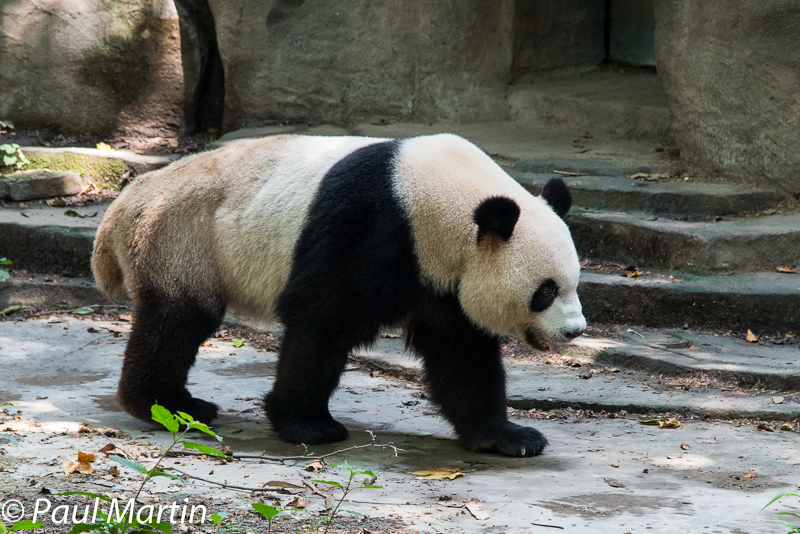
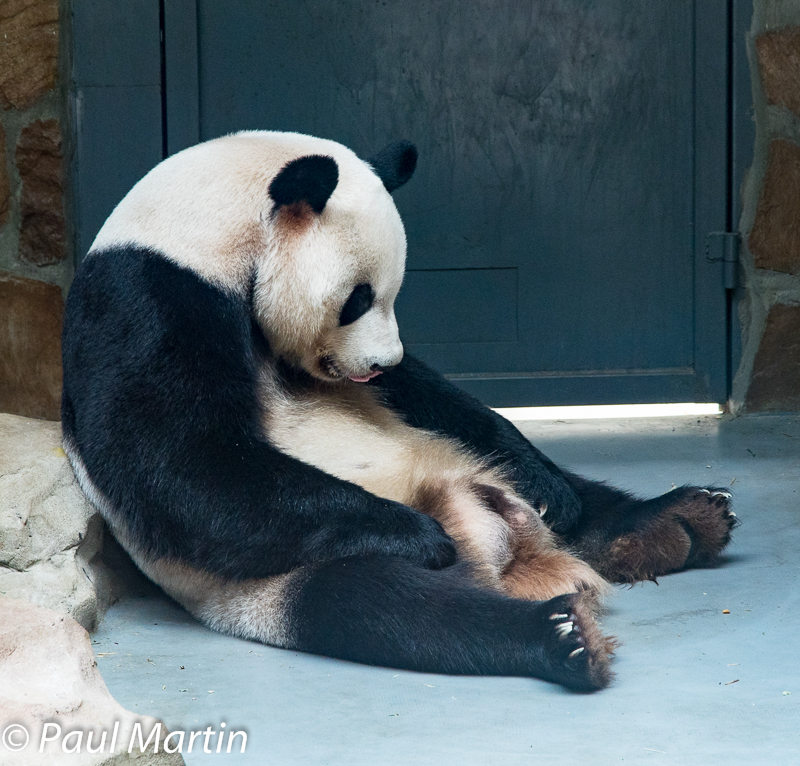
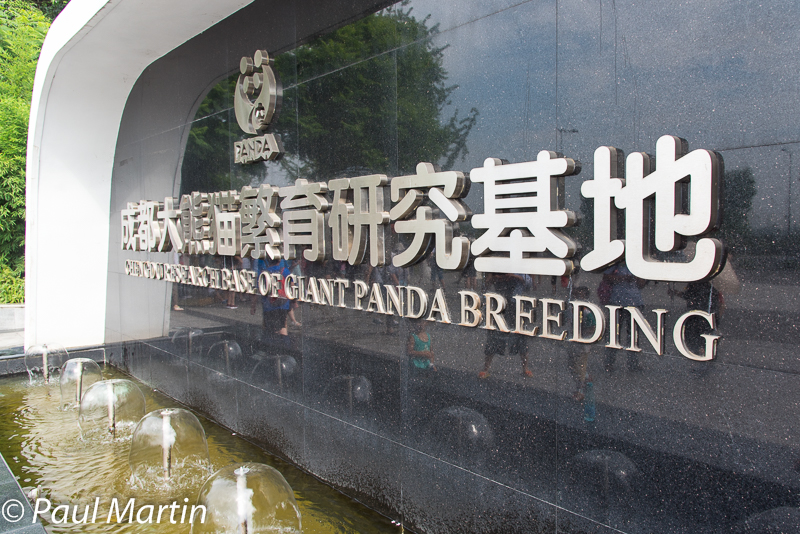
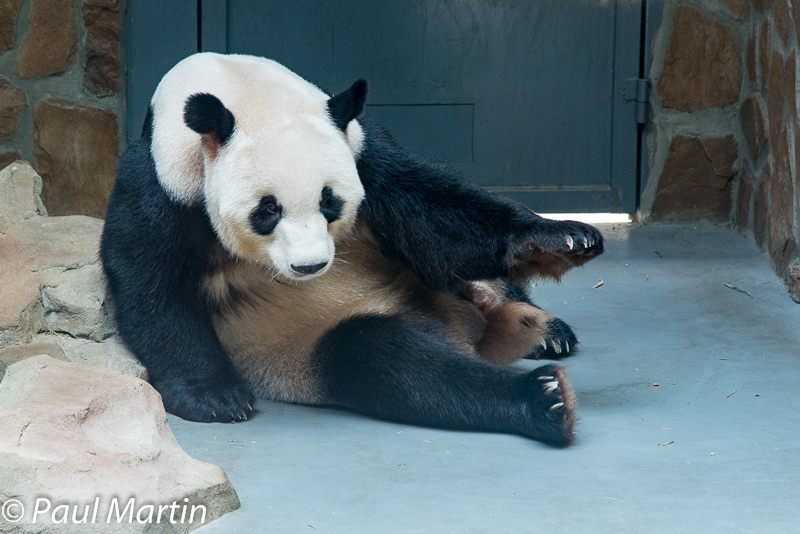
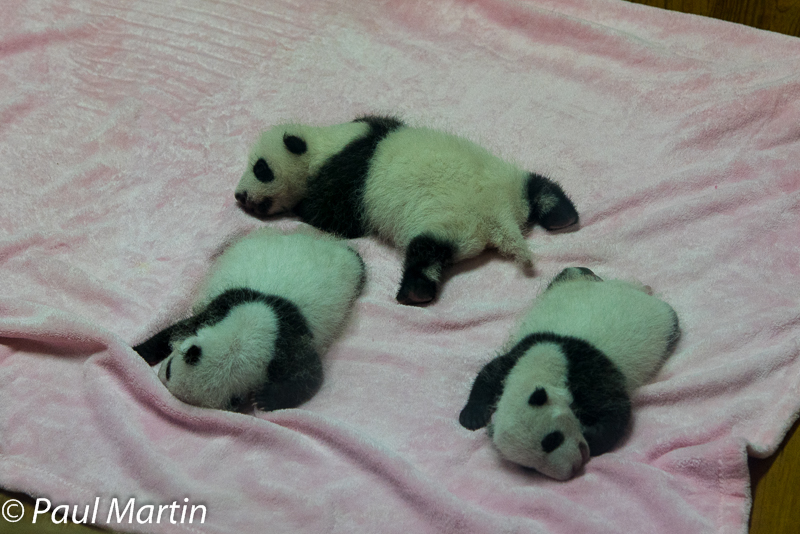
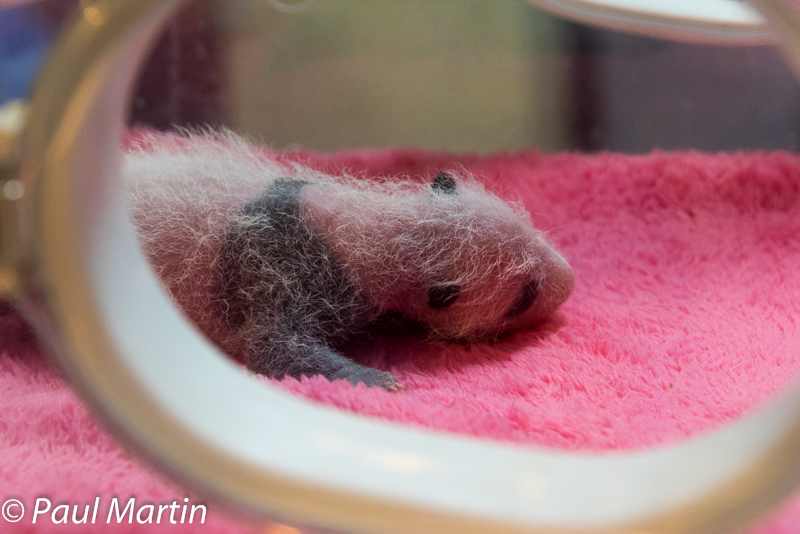
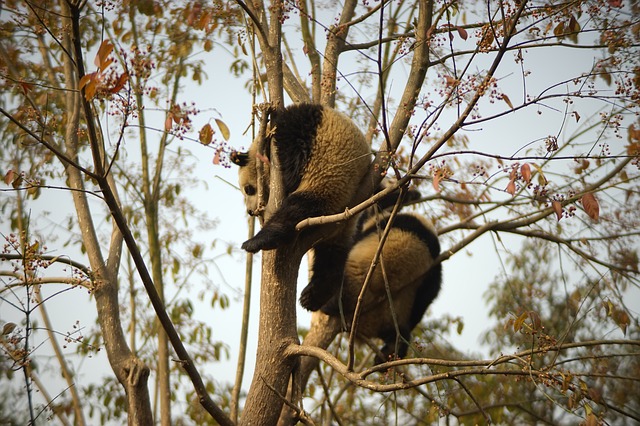

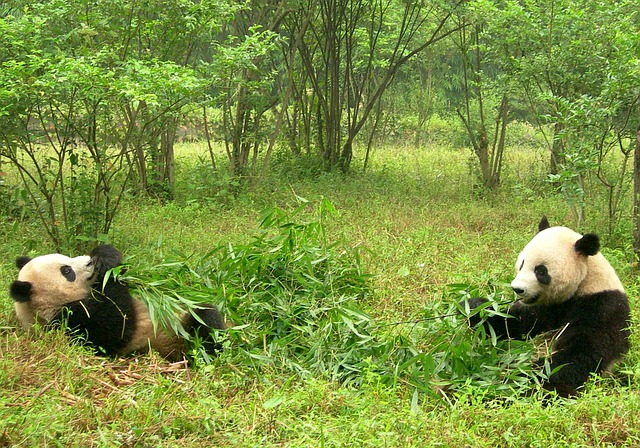
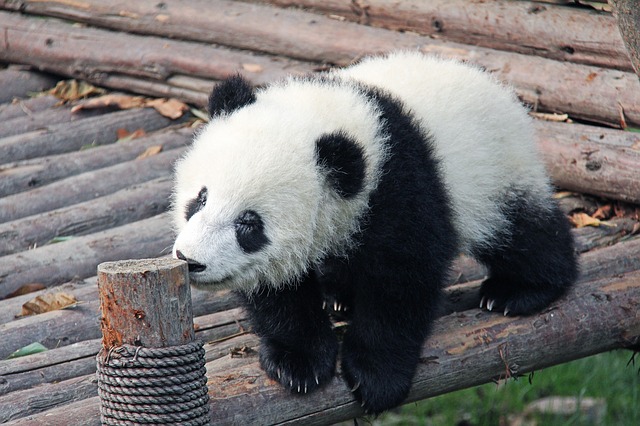

This is a really great article Claire, thanks for sharing! You’ve definitely presented a very balanced argument here. I err on the side of “yes – it’s the right thing to do”. If humans have contributed to the decline of a species then we should definitely do everything possible to fix it. I agree with you though, there are definitely other measures that could be investigated – maybe better protecting their natural environment?
Hmm – lots of food for thought 🙂
Hey Emily, thanks for your comment! Yes, that’s a very valid point, I definitely agree that we should be doing something, but yeah maybe something different… I feel like there’s no right answer really!
I never got to visit Chengdu or visit the panda’s while I was in China, which was a shame. This was really interesting to read though, and as I travel more, I think more and more about the ethical nature of places keeping animals.
Thanks for sharing Claire!
Hey Helen, thanks for your comment! It’s definitely worth seeing to see if you think it’s an ethical project, but I’m just a bit unsure about it all! Happy travelling!
Love that you considered both sides of the story without jumping to conclusions. I think places like this are important for education and preservation, as long as they’re done well. This one seems like it’s at least on the right track and just has a few things to tighten up.
Yes, very true! I’d feel a lot better about the project if a few things were done differently… thanks for your comment!
What a tough dilemma, damned if you do damned if you don’t kind of situation. Unfortunately it seems like pandas are one of the many victims to unrestrained urban sprawl, pollution, and the overuse of this Earth by humans. One can hope that there is a ceiling to this madness and centres like this are buying time for the species! Thanks for this piece, very interesting.
Definitely! It’s so sad that pandas have become one of the victims, but lets hope that the centre is helping rather than hindering it! Thanks for your comment!
Mixed feelings about this whole Panda business. The National Zoo in Kuala Lumpur spent millions to build a fancy, air conditioned pavilion for 2 Pandas. While we have our own black & white, endangered species. The Malaysian Tapir. But I guess tapirs aren’t selling tickets and merchandise.
rik
Oh wow really I didn’t know that, that’s really sad for the Tapirs! Yes as I’m sure you can tell I have very mixed feelings too. I’m not even sure if they’ll want to be in a fancy pavilion? Who knows eh? Thanks for your comment!
Oh, you did a huge research I can tell. That article really made me think. We’ve never visited China so obviously didn’t see panda anywhere else than in zoos when we were kids. I almost never take any side on the discussions, not because I don’t have my own opinion. Only because the more you read, talk and discuss the matters the more you learn and start questioning your own opinion which you made before… There is no obvious answer of course. Probably some pandas feel good there, some not. It is hard to say something generally. Like all species every single animal is a different character… Maybe I am going to deep now 🙂 So is Chengdu ethical? I… I don’t know. Probably we’ve never answer that question because we can only question it between us – people. We should ask pandas how they feel 🙂 And yes, that was what your article reminded me while mentioning about cutting trees. Everything is around us. I feel ebmarassed and amazed at the same time that I represent this species. But I wouldn’t mind if world would be ruled by dogs, pandas…or trees one day. Just for a change.
Thanks so much for your comment! Yeah I agree with that, there’s valid points on both sides of the argument. I understand them both but I can’t help but question it! Yeah that’s very true, it might be different compared on different animal. It did make me uncomfortable seeing some of them were quite stressed though! Yes I know what you mean, us humans have destroyed a lot of the earth and it’s a bit worrying how far it might go! Hmmm.. lots of food for thought!
Great article. Like you, I don’t like seeing wild animals in captivity. Especially when it’s only for humans’ pleasure. However, I sometimes wonder if the sacrifice of some in this situation could serve the entire species. I mean, I still feel sad for these individuals, but if it can protect more… it may be worth it. For example, I know a place where you could take photos with baby animals (there was a wombat, a koala, an alligator and a Tasmanian devil), and they would use 100% of the money donated for the photos to pursue research on the disease killing the endangered Tasmanian devils. Another example could be the aquariums: my heart is broken when I see marine animals with no space (I am a diver and I’m used to seeing them in the wild), but I feel a lot better when the aquarium has a focus on educating visitors about how to protect the species, how they can act at home to protect the environment, why they should stop using so much plastic, etc.
Thanks so much for your comment Eloise! So good to hear other people’s opinions on this. That’s a very valid point, and again it’s a very difficult question to answer. I don’t think there’s a right or wrong answer to it actually, as I can see points for both sides!
It does aim to educate visitors about the endangerment of the panda, so I guess that’s a good point. It’s very difficult to judge the situation! Thanks again for commenting, great to hear from you.
I agree 100% about animal tourism, or keeping animals in captivity for the entertainment of humans in general! I don’t even like zoos. Even if the animals are treated kindly, they’re not meant to be locked away. And they’re not definitely not meant to be paraded around so you can take pictures with!
Yeah this is the main issue that I had with the panda centre, I found it so surprising that a place dedicated to protecting the panda offered a photo taking opportunity! I hate zoos too!
Panda costumes, really…?!?! ?? As I told you on FB – I love how you carefully talk about the situation, trying to look at it from every angle. After reading it I was even happier we didn’t go on our last Chengdu visit a few weeks ago!
I know! Apparently pandas are much more sensitive to smell anyway so it’s a bit pointless. Thanks for your comment
So cute! Usually I’m not a big fan finding all these animals cute but these are a lot an you took nice pics! And you are right to wright sth. about the problems. I’m Greenpeace member since 30 jears and I like this I know we all should care more about our nice planet.
Thanks! Haha me too, these guys are pretty cool though!Yeah, maybe it’s the root of the problem that needs to be sorted, not the problem when it arises?!
Interesting thoughts. I was there and I think what they do is OK, it is so difficult their reproduction and survival . . .
Yeah, it’s definitely a tough one to answer!
What a fascinating article Claire. I would say for this one that yes, I think it is the right thing to do. Although things can always be improved, and hopefully those things will be improved in time, places like this raise awareness about a species in decline. And also how humans contribute to this decline. Although I’m not a massive fan of zoos either and the way most of the animals are kept in unnatural environments, they do educate people about animals and hopefully this contributes in some way to the conservation of certain species.
Thanks Emma! Yeah if the conditions were a bit better I’d feel a lot more assured about it. It would be great if it showed more about why the pandas are endangered – I had to find it all out through my own research! As long as we all keep on learning. Thanks for the comment!
I love Panda! I literally planning to apply as Panda nanny.
Great article Claire. As long as the number of pandas keeps steadily rising and they are eventually released back into the wild, it’s all good with me!
How can it be ethical when they take the babies away from their mothers simply so that the mothers can be raped and made pregnant again. Yes raped .. she has NO choice in it. Also the males … to get the sperm they have an electric prod put up their anus which then makes them ejaculate. ETHICAL … NO WAY
I am very interested to hear where you found this information regarding “rape” of a panda, these are very strong words to be used and quite frankly, untrue. There is a big difference between artificial insemination and rape, and your comment feels it has been used as a shock-tactic and unfair in this instance. I believe you should read PD’s comments which are in-depth and balanced, and choose words more carefully when discussing a subject of such a delicate nature.
You bring up so many good points here. It is such a challenging issue. I see what you mean about any sort of animal conservation being a big step for China but many things about this center seem not right! Great article and discussion!
This is a very interesting piece – thanks for sharing!
Personally I think that there is a line past which humans should not cross to “undo” the damage caused by human impact if in crossing that line more harm is done than good.
For me, the Chengdu centre, and invasive captive conservation projects for any species (by this I mean artificial insemination, cages like in zoos, regular human interaction) is that step too far.
Despite the fact that humans are to a large extent (though I would argue, not fully) responsible for the declining Panda populations – if saving the species comes at the significant cost of this kind of captive conservation then I think we would be better to let the Pandas die-out with dignity if we cannot encourage a viable wild population by protecting their environment. It seems to me that the harm caused to the individual Pandas in captivity here at Chengdu outweighs the theoretical benefit of this conservation practice. This is especially true when you consider the survival rate of re-released animals (particularly Pandas). There is significant research about how even 1 generation born in captivity results in a significant enough loss of the normal instincts present in wild bears that their ability to survive outside of the centre is damaged beyond repair.
What the centre, and others like it, are doing (in my opinion) is making money for branding reasons and Government-gain at the expense of the animals’ well-being. China does not want to lose it’s national animal. I sympathise with that – I don’t want the Panda to be lost either but equally I don’t want it to only be found in a centre in Chengdu where Pandas are taught to be Pandas by humans in Panda suits and baby Pandas play on slides… cute but ethically wrong in my book! Wild animals are wild and conservation should focus on protecting natural environments!
Thanks for your comment! Yes I agree, there’s definitely a line. It’s just hard to discern where the line should be! But yes, artificial insemination, zoo conditions and human interaction is not natural and it is this what made me feel uneasy when I went to the centre. Yeah that’s very very true. I definitely agree with your points made!
Hi Clare, this issue has been weighing heavy with me as I’m due to visit Chengdu on Monday & was in two minds about whether or not to go to the centre. Thanks for making so many valid points. I particularly like that you note the difference in animal rights between here and what we might be used to (animal testing a requirement by law?!?!). Anyway, after reading I gather that the *intentions* seem to be in the right place here which, for me personally is an important factor (though obviously not as important as the animal welfare itself), so I think I shall do as you suggest and go along to see what I think about how ethical it is. Thanks. Jamie-Lee
Hi Jamie-Lee, thanks for your comment! I’d be really interested to know any more thoughts you had about the place.
Thanks for this thoughtful piece. I am scheduled to go to the center in a month or so. I’m going to do the volunteer project where you clean up and help feed the pandas. I’m struggling with the photo op. My concern is whether it is harmful to the pandas. I know that human interaction with them is not natural. But it also doesn’t raise some of the issues I have with other animal interactions – for example – swimming with dolphins (where dolphins are murdered and others kidnapped to support these activities), petting baby tigers (who grow up to be big tigers and are sold to animal dealers or worse), riding elephants (who are broken and chained), etc. If the pandas are not harmed by the photos and their care benefits from the extra money, then I am kind of ok with it. Again, not ideal, but maybe not awful. If they are legit harmed – like it changes their behavior, makes them unable to survive, etc., then I am not ok with it. So I guess I’d appreciate some thoughts on this. I’m not as interested in the position that the center is inherently bad because the pandas should be in the wild – in an ideal world this would be correct. I’m more looking for a perspective on what the actual harm may be to the panda if it interacts with a human. I appreciate your thoughts.
Hi Courtney! I get what you mean. It’s definitely not like other animal tourism attractions which are downright torturesome to the animals – the panda base does have good intentions. However, I do think that the pandas that are used for photos are negatively affected – I can’t see how they can’t be. Pandas like 5 kilometres of space around them at all times!! I think in this case these animals are acting as a martyr to raise the money to research the preservation of a species as a whole. Is this ethical? I’m erring on the side of no, as I don’t like to see any animal disturbed and acting unnaturally no matter what the intentions, but I can understand people’s arguments for the opposite. Personally, I’d pay the money as a donation to support the species without holding the panda.
Thanks Claire! I understand what you’re saying. I think I’m going to have to see how it feels when I get there. If the pandas are all mingling together and with the keepers and don’t seem too concerned with personal space, I might be willing. But if it looks like they’re really not into it and they have to be manhandled, I will probably pass.
Few additions/corrections from a conservation biologist who has worked in the wild and captive facilities all over the world.
Claire, I appreciate the nuance and thought put into your post, but it is even more complicated that what you presented. Pandas don’t “like” 5 km space around them at all times. You are correct that research has found average home range of pandas to be roughly 5 km squared, but this varies a lot. More importantly, their core range, which is the area they use most of the time, is significantly smaller, averaging between 0.33 and ~1 km squared. This is still much larger than most enclosures, but it relates to a larger point. An animal’s home range isn’t based on what it likes; home ranges are based on the availability and distribution of the resources required by an individual. This can include numerous features, and for pandas includes food and water year-round, big old trees, mates, dens (for females), safety, etc. Animals don’t move around a huge area for fun, their movements are tightly linked to the amount of energy expense required, their evolution, and where resources are located. This is why studies have found bear home ranges to vary between years of high food availability (smaller ranges) and low food availability (larger ranges), and why bears that feed in trash dumps often have reduced home ranges. If an animal is able to acquire its required resources in a relatively smaller area, and it can use less energy, it usually will. Some animals that evolved long-distance migrations (such as African elephants or some whale species) might not fit this model, as they have evolved mechanisms to reduce energy costs of movement and the drive to continually move may be wired deep inside them. Pandas certainly aren’t long-distance migrants, and their daily/seasonal/annual movement is strongly correlated with bamboo availability, temperature, and reproduction. If a wild panda could get everything it needed throughout its life in 1 acre, would it move outside of this area? What about 10 or 100 acres?
I am not at all advocating for tiny enclosures, and think they need to be adequate for the animals, but the home ranges of pandas and all animals are complex, it is incorrect and way too simplified to say they “like 5 kilometers of space around them at all times.” How small is too small? I have no idea and that should be an area of study for the managers of pandas and other captive species. It is a difficult question to answer though. The prevalence of abnormal or stereotypic behaviors of an animal is a good indication of how adequate the enclosure is, but again, some animals exhibit such odd behaviors regardless of the enclosure. Complexity of the environment may actually be more important than area for many species, so increasing the enrichment features and complexity of even smaller enclosures may be much more important than size. Just keep that in mind when you think about these issues.
As far as reintroductions and conservation, it is vitally important we be correct and as accurate as possible about the statements we say. There is a lot of information here in the comments that simply isn’t true, not quite shocking considering most of the internet though .
Emily Askham says “There is significant research about how even 1 generation born in captivity results in a significant enough loss of the normal instincts present in wild bears that their ability to survive outside of the centre is damaged beyond repair.” That just isn’t true. Not only is there not significant research that says this, there have been no quantitative experimental analyses of this. There have been papers that show reduction of wild behaviors in captive conditions for many animals, but not that this is irreversible. Reviews of bears and other species on this topic do not come to your conclusion. Some researchers may have an opinion that this is the case, but is not the same as saying there is research that shows this. More importantly, increasing the wild-behaviors of captive animals through conditioning is a relatively new field of behavior and conservation, but has been very successful in numerous species. There are species that exist in the wild today because of the release of captive born individuals, that were born from numerous generations in captivity.
Emily also says “Despite the fact that humans are to a large extent (though I would argue, not fully) responsible for the declining Panda populations.” This argument is wholly incorrect. There is no data to suggest that giant panda populations would have declined, particularly to the lows they reached in the 1980’s-90’s without humans, and they certainly wouldn’t have rebounded as they have without human intervention. Humans did this, humans must do what they can to undo it. Otherwise close every zoo and let every species go extinct that can’t adapt to humans. Ensuring there is lots of land simply isn’t enough for many species. If it were, we would still have passenger pigeons. The conservation success of species depends greatly on a host of other factors, such as species specific reproductive rates, connectivity, genetic diversity, behavior, their ecosystem and community, climate change, etc.
Finally, there is no “dignity” in extinction. Every species lost due to us is an irreversible stain on humanity. Yes, conservation biologists should maintain high ethical standards, but it is horrible to say they should let them die off because you don’t agree with the methods. If you believe you know better than what is being done then test and prove it. There is nothing stopping you from obtaining the degrees necessary to get a position in conservation, do the research, and prove your hypothesis. People do that every day. That is the best part about science, it is open to everyone. Captive facilities around the world are continually improving, as they should. They should continue this effort and focus increasingly on conservation action and animal welfare. As far as reintroduction programs go, as I said before, there are species that exist today because of reintroduction programs. All of these programs experience mortalities. That is an unfortunate fact. It is also a fact that wild-born animals experience untimely deaths, as do captive animals. Fortunately for condors, bison, black footed ferrets, and numerous other species, there are people who disagree with this sort of mentality and saved these species, despite the difficulties and losses related to reintroductions.
As far as the rape comments from Diane go, you might consider artificial insemination rape, but you are in the minority in the world. Rape is forced sexual intercourse. To compare what happens to people all over the world on a daily basis to the collection of sperm from and artificial insemination of anesthetized animals is disgusting and shameful. These methods are common with many captive and domestic animals. This is frequently how horses, almost all livestock, many dogs, and captive animals at are bred zoos. It is incredulous to attack the Chinese over something that is common practice in the west (and which they adopted from them), particularly as they did it as part of their efforts to save a species from extinction, not to race a horse faster. If it wasn’t for these practices there are many species that simply wouldn’t exist in the world. You might also consider reading more about sexual behavior in animals in general. Many species, such as orangutans, reproduce exclusively via forced copulation. While this doesn’t at all excuse forced sexual intercourse between humans, the collection and implantation of sperm is far off from “rape” and any attempt to confuse the two is gross. It is also important to note that many pandas in captivity breed through natural mating.
Hi PD, thanks a lot for your comment. I appreciate the insight from an expert and it’s good to get different opinions on this topic, as it is such a controversial one. I will reassess and do a bit more research into panda’s space needs, thanks for bringing it to my attention. I got the ‘5 kilometre thing’ from a lot of research, but there is always more to read!
I definitely agree with you that there is no way pandas would have become endangered without human intervention – and I completely understand your point that humans should do what they can to undo it. I’m just very unsure of the ways that the ‘undoing’ is done. The photos were a big no-no for me – even if a panda doesn’t need 5km of space around them, they definitely don’t want to be held. It also must be mentioned that Chengdu is not at all a panda’s natural climate. This was quite distressing as well.
I value animals very very highly, which is why I really don’t agree with artificial insemination for any of the animal instances you mentioned in the western world (and I do not buy into any of those industries – I’m vegan, I don’t go to racing events etc.). Yes, artificially inseminating pandas is more ethical than all of these instances; but it still makes me feel very uncomfortable. I strongly agree that people must look at the bigger picture when thinking about these issues though, as western meat industries do far more atrocious things.
Pandas breed naturally in captivity? I was not aware of this. Not disagreeing, but everything I read states otherwise. I get a lot of your points, and I understand from conservation angle things to need to be done – I don’t want to see pandas become extinct either. However, I’m not sure if conserving unnaturally is the only way to go about it – it might fix some things, but it does harm individual animals and it isn’t a long-lasting solution if the world keeps developing as it does. I think there should be a much bigger push in education around the world about ways we can stop impacting animal’s natural environments, and that’s really the only way to properly solve endangerment issues.
It is a very hard, controversial topic, which is why I’m really glad that there are so many comments debating it. Thanks again for your insight!
Hey Claire. Great discussion. Thanks.
Based on the paper I linked below, the majority of pandas born in captivity are actually from natural mating. Not sure why most of what you read says the opposite, might just be that AI is technology and more interesting to write about.
In general, AI is a tool managers can use to maintain genetic diversity in a captive population, particularly if it is over-represented by certain individuals. Genetic diversity is absolutely crucial for animals to adapt to new threats and environmental changes. The alternative is to collect more individuals from the wild to increase the genetic diversity in captivity. I am personally against this unless absolutely necessary.
In a perfect world, I would totally agree with you that we should focus on in situ (in the wild) conservation actions. And maybe we can get to that point some day. Unfortunately, it is very unlikely that those actions would be enough given the far reaching and devastating impacts humans have had on nature. It really is a choice between doing everything we possibly can or letting populations and species go extinct. There is no middle ground. Even so, the ethical considerations of an individual animal’s welfare are high on the list of priorities when thinking about species conservation actions. Most of us have dedicated our lives to this field because we love animals and the natural world and want to care for it.
Climate change has all of us extremely worried. Species that live in mountains (which are impacted very strongly by climate change) and rely primarily on few resources (such as bamboo) are at very high risk of extinction from the effects of climate change. The IUCN (link below) references papers that predict giant panda habitats to decline by over 35% in the next 70 years. Some of those models estimate declines up to 60%. Imagine if humans were expected to lose 35-60% of our habitable area in the next 70 years. We would be doing everything possible to ensure humans survived. That’s what conservation biologists are fighting against.
Unfortunately, it is unlikely that society is going to change enough to curtail the effects of climate change. There are massive global educational campaigns about this issue, but the amount of money that powerful people stand to lose is high, and people are afraid of change. Without major and rapid reductions in greenhouse gas emissions and deforestation (reducing the Earth’s ability to sequester carbon) it is unlikely that local actions to protect panda habitats are going to be enough to counteract the massive threat of climate change. So conservation biologists are struggling to do whatever they can to give the species they focus on a chance of surviving. We tend to be pragmatic, and often plan for the worst situations, instead of hoping for the best.
The methods they are using for pandas don’t really seem much different than for most other endangered species, it’s just that pandas get a lot more press and their popularity certainly results in some differences. You don’t see millions of people visiting the Giant Golden Mole Base each year. With that in mind, I would say the world is better off having California condors and all the other species that exist today because of these methods (primarily captive breeding and reintroductions). If it took AI to make that happen then I am all for it. BUT, that isn’t to say that the methods and activities shouldn’t be continually evaluated and improved based on the best and latest scientifically collected data. And the conservation outcomes and welfare of individuals should be prioritized over everything else.
As far as photos with captive pandas, I agree, but for different reasons. I don’t think you can say they definitely don’t want to be held. That would depend on the individual. You can see countless videos of wild animals, including large predators, that do enjoy and seek out human companionship and even affection. In my own work I’ve handled countless wild animals (that never had human contact before) and for some it is clearly a positive experience. There is also research on other captive animals, chimps are a good example, that shows human interactions to be a strong form of enrichment that helps decrease stress and associated stereotypic behaviors. It is reasonable to assume that some pandas may actually enjoy meeting and interacting with new people. However, if they are trying to maintain wild behaviors in those individuals then interactions with the public would be counterintuitive. More importantly, there is always a threat of disease transfer from humans to mammals, so I don’t see how the benefits could outweigh the potential negatives. That being said, everything I can find online says only one facility lets you take photos with pandas and it is not at the Chengdu base. Maybe it’s going out of style.
As far as Chengdu not being the right climate for pandas, this is more an argument against zoos than a panda facility. Most zoos, except for those that focus only on local species, keep animals outside of their range. I don’t personally see a problem with it as long as they provide the animals with the resources needed to be healthy and content. To be frank, I’m certain that no one here knows what restrictions climate has on the range of pandas. They once ranged throughout southern China, Vietnam, and other areas that now have hot climates, why aren’t they there any more, was it due to the climate? I don’t know. I also don’t know the physiological limitations of pandas to certain temperatures. I think it’s a safe bet that you don’t know this either. I’m not saying this to offend you. No one knows everything, so we all don’t know a lot. But it is absolutely critical that we make our determinations and opinions based on not only what information we know, but also the information we do not know. I also think it is absolutely imperative that we are implicitly clear about what we do not know for certain when discussing these things in public. Part of the reason the world is so messed up right now is because we (the greater we) have confused fact with opinions, and neither seems to have more weight than the other. Maybe this is a small example here, but it is such a pervasive problem I feel all reasonable people have a responsibility to maintain the highest standards. The anti-science movement in society is one of the greatest threats to biodiversity and the environment, so we should fight it as much as possible.
I guess the larger question is, do zoos benefit the wild animals they contain? Increasingly the answer to this is a resounding “yes.” Zoos have been playing a more important and central role in conservation over the last few decades, and now are critical to both wild and captive conservation. Even medium-sized zoos in the states often spend millions a year on conservation around the globe. One of the main efforts of zoos and the AZA (the network that ties zoos together) in recent years has been to develop networks of zoo professionals to rapidly respond to conservation problems. Their impact has been unprecedented. It is also difficult to think of any other group, system, or collection of organizations that do as much to educate the public on conservation and environmentalism as the AZA. Unless everyone is willing to pay more in taxes to support conservation and dramatically change their lifestyles, I don’t see how we could replace the conservation and educational benefits that zoos provide.
I appreciate this conversation. Reasonable questions, criticism, and demands for transparency from the public to conservation organizations and captive facilities are important, as is the willingness of the public to update their opinions based on new information. Everyone is prone to dogmatism, which is why it s critical we have these kinds of discussions and try to gain some mutual understanding through empathy.
Thanks again for being on top of your comments!
https://www.researchgate.net/publication/320108086_Analyzing_the_past_to_understand_the_future_Natural_mating_yields_better_reproductive_rates_than_artificial_insemination_in_the_giant_panda/figures
http://www.iucnredlist.org/details/712/0
Admittedly this is a tough discussion, and many valid points have been raised. I visited this panda base 5 years ago (so 3 years before you), and photographs were still allowed. I believe this practice was temporarily stopped 6 months after our visit, and various other panda centres take it in turns allowing photographs for short periods of time to raise funds to continue with the centre’s research.
I am a huge animal lover, I don’t visit Zoo’s or aquariums, and extremely mindful about human/animal encounters in “sanctuaries” . I guess there are always two sides to an argument which you have shown here and balanced well, and it really is difficult. I carried out research prior to my visit and yes I had a photo taken with a panda. This particular panda was 1 years old, was sat on a chair and given honey on it’s paw as panda’s love honey, which he merrily licked for the entire time we were there. There was a limit of 8 people allowed, 2 minutes a time, and all participants were given a gown, gloves and shoe-covers. When looking around, I didn’t feel the pandas had inadequate space, but as mentioned, we visited a few years before you and at our visit, there were 34 babies in the “nursery” so perhaps things have changed.
Pandas are their own worst enemy; they can only conceive during a short period of time once a year, and when they do become pregnant, if they give birth to two babies, they will abandon one and leave it to die. Known as “the living fossil” they are 8 million years old and the life-span of any animal is 5 million years, so they are well-past their extinction date if you look at it like that, on top of them losing their natural habitat, it is centres such as this that are keeping them alive if I’m brutally honest. That then starts another debate, do we allow an animal to become extinct naturally when so many are being driven to extinction? I hate the thought of anything being extinct.
When I visited, the panda’s didn’t appear stressed, quite the contrary and had plenty of room to roam free, and appeared to be living a content life (panda’s don’t “need” as much room as we would think as they only consume 200 more calories a day than their bodies needed, hence why they are “lazy” creatures who lie on their backs to eat to conserve energy. I’m not saying they are suited to cages or small spaces as can be found elsewhere).
We had the centre pretty much to ourselves and just sat watching the pandas for quite some time. After food time, they went to sleep, as pandas do, but they also had an area they could retreat to away from humans. The story of the pandas here on our visit was most were reared in captivity and despite attempts to re-introduce them into the wild, efforts had proven fruitless.
This debate could definitely take many different turns, and as an animal lover, it’s difficult to know what to do for the best. All I can speak about is whether an animal looks stressed, whether it’s drugged or caged, if their well-being is considered. For my visit (which as I have said possibly had a lot less pandas than when you visited which will make a difference), all pandas looked happy, care-free, and in my gut I didn’t feel their quality of life was diminished in any way.
More discussions like this do need to be raised, to ensure the well-being of animals at all times, especially in a money-driven world. It’s too easy to become complacent, and it will be animals who suffer.